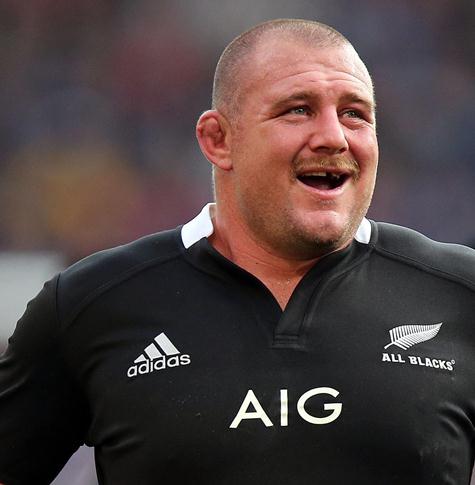Rugby Analysis Needs A Reset
7By Niall Anderson
This weekend, a competition starts which is set to captivate the nation; sparking endless debate and spawning hundreds of breathless articles.
No, it’s not the Cricket World Cup – it’s Super Rugby, and the articles are already taking up full page spreads in our weekend papers as forecasters and prognosticators come out in force to give their opinions on how the comp is going to be play out.
There’s only one problem with these opinions.
(I lied. There are several problems with these opinions.)
There is no popular New Zealand sport of which analysis relies on the “eye test” more than rugby. Sports like basketball, cricket and even rugby league have statistics ingrained in how fans and media follow the sport.
Want to see who the best shooter is on the Breakers? Easy. The best batsman on the BlackCaps? Well, average and strike rate do a decent job of painting a solid picture. The best forward on the Warriors? You can gander at hit-ups, running metres and tackles to help create your argument.
In rugby, the closest that fans come to statistics in the mainstream is by playing virtual rugby. Sure, you might see the odd infographic on Sky Sport to show the workrate of Brodie Retallick or the tackles made by Richie McCaw but by and large, rugby analysis is one man’s word against another’s.
In yesterday’s Sunday Star Times, there was a whole page of rugby articles, and not one statistic was mentioned, which is especially egregious when analysts were justifying who they thought would win the Super XV.
One piece even went as far as saying this about Tony Woodcock:
“Simply put, there’s no better scrummaging loosehead in world rugby”.
How can anyone say that without facts, or proof to back it up? It’s becoming an ever-clear sign of where rugby analysis is still at in 2015 – one flimsy opinion against another, with no empirical evidence to back up statements.
Let’s be clear – A lack of statistical evidence in the mainstream media isn’t really the fault of individual journalists. As a casual rugby fan, I garner most of my news through the mainstream media, and apart from an extremely valuable goalkicking site, I’m unaware of in-depth statistical rugby analysis likely floating around in small corners of the internet.
However, there is also a lack of willingness on the part of the rugby hardcore to accept statistics into rugby analysis. Excellent Waikato Times writer Ben Strang unveiled a formula late last year to try and evaluate the first-fives in New Zealand. Although all-in-one figures aren’t the holy grail of statistical analysis and can be flawed, Strang’s article was a breath of fresh air – using numbers to make points, rather than the usual traditionalists using the eye test to make a case for who they think is the best number ten in the country.
What may be a surprise to many is that the All Blacks selectors have the statistical part of the game locked down. It is understood that the statistical portion of All Blacks management have all sorts of information and data at their disposal – making the selectors outrageously more informed than pundits and fans.
Although that is usually the case in most sports, it is especially so when it comes to rugby. The most important aspects of play are analysed statistically and through the trained eyes of the selectors, and largely guessed at by media and fans.
Take the halfback position for instance. I would suggest that the most important aspects of halfback play include speed to the ruck, passing accuracy and speed, kicking distance and accuracy, and defensive presence.
The All Blacks selectors would have all that information at their disposal. They could tell you which halfback in New Zealand gets the ball out of the ruck faster, and which one gets around the field the most. They could also inform you who the best box-kicker is. The poor average fan and media member? We have to guess from watching on the TV, or in the stadium, leading to potential confirmation bias.
Even the most clued-up and experienced rugby analysts can’t hold a candle to the array of options the selectors have to make decisions (which raises the point that any criticism of selection choices should be taken with a huge grain of salt).
Simply, the media hasn’t evolved to rival the in-house statistics held by selectors, with traditional thinking largely accepted. The by-and-large duopoly of written sports media (NZ Herald and Stuff) mean that new-age or outside-the-box thinking is largely confined to smaller, less-read spaces. Aspiring sports journalists have few places of which they can realistically earn a living working for, and they are mostly being brought up on the same traditional views held by the less-statistically advanced ages before them.
In the USA, the average fan can learn and debate about their chosen sport at whatever level they choose. Want to be a casual fan and have “who is better” debates with your mates? By all means, have at it. Want to obsess over advanced stats and lay out sophisticated analytical arguments about your favourite team or player? It’s all available on the internet.
However, in New Zealand rugby, such options aren’t readily available in the mainstream media. In fact, they probably don’t exist at all.
I’m optimistic that soon enough, sophisticated statistical analysis will start seeping into the New Zealand sporting media culture, and we will see opinions being backed up with facts and statistics dropped into game recaps to help illustrate how well a particular player fared.
But expect to see the “eye test” be heavily present in rugby analysis for a while yet.
Follow Niall on Twitter


Nice piece Niall – true that most International teams (well probably not Samoa) have masses of scouting data on their own and other teams players but choose not to share externally for obvious reasons.
Also worth noting the Sky team (mainly Scotty Stevenson who seems to get more and more like Graham Hughes with every call) also often try to throw in the odd stat that’s not on screen (e.g. “Player X leads the ITM Cup in offloads this year”).
Personally the one stat I’d like to see them develop and publish is the one that measures ‘Ticker’ because that’s the one that usually counts the most at the end.
A great piece there Niall. Well-put together thoughts; agree that there’s a void there. By the way, just the kind of quality of article one would expect from a Gunners fan, heehee. (Arsenal forever)!!
Top yarn, Niall.
Our stats on ASB Premiership football are also remedial.
Cheers guys, appreciate it.
I objected to the Arsenal comment.
Haha. And I don’t need to be a Rocket scientist to know why you would particularly object to it, either. Don’t know why though- you already forgotten that result last weekend?
Niall – the ‘ eye test ‘ as you put is always going to be the main way to judge a sports teams or an individual sportsman… yeah stats help, but are only ever going to be a secondary thing.
NZ rugby supporters aren’t idiots they definitely know what makes up a good player & all the skill sets needed in each position, what tactics need to be changed during a match etc.
Doesn’t matter what sport it is the ‘ analysing eye test ‘ is always the best way to select players, for how well they do the basics at pace, read game situations to take right options, how well they cope under pressure, everyone doing their job well so all the others only have to focus on their own positions.
If fans want to focus on trainspotting they can record a match, look through that video for stats as many times as they like.